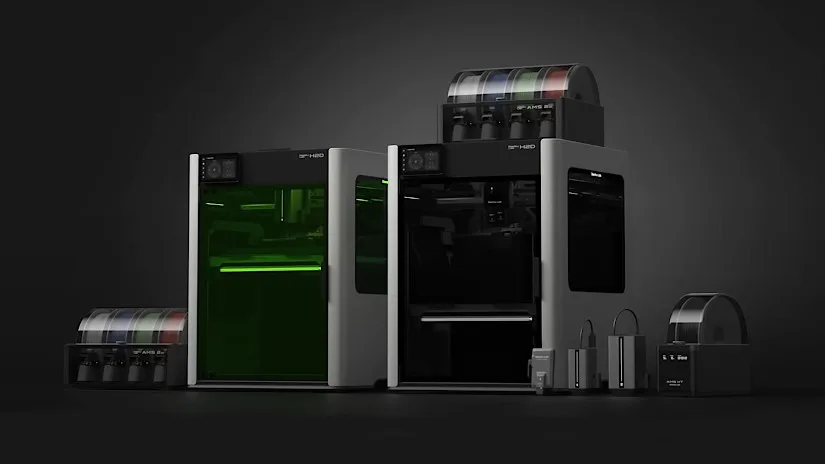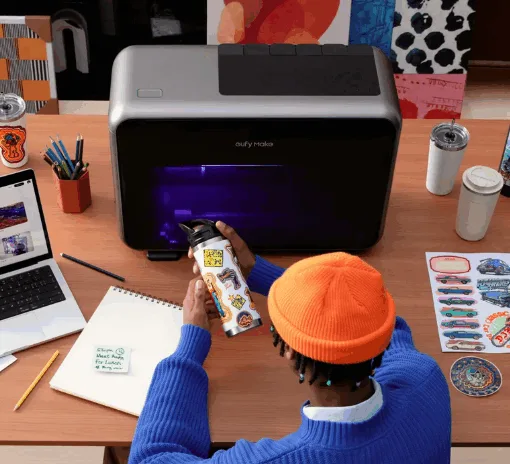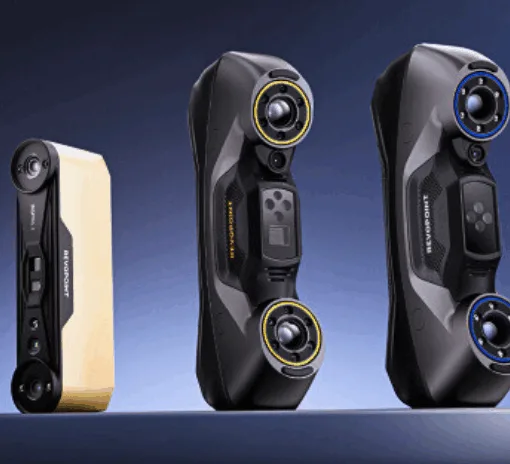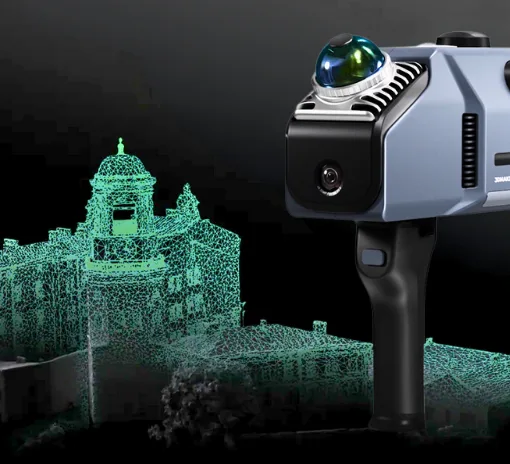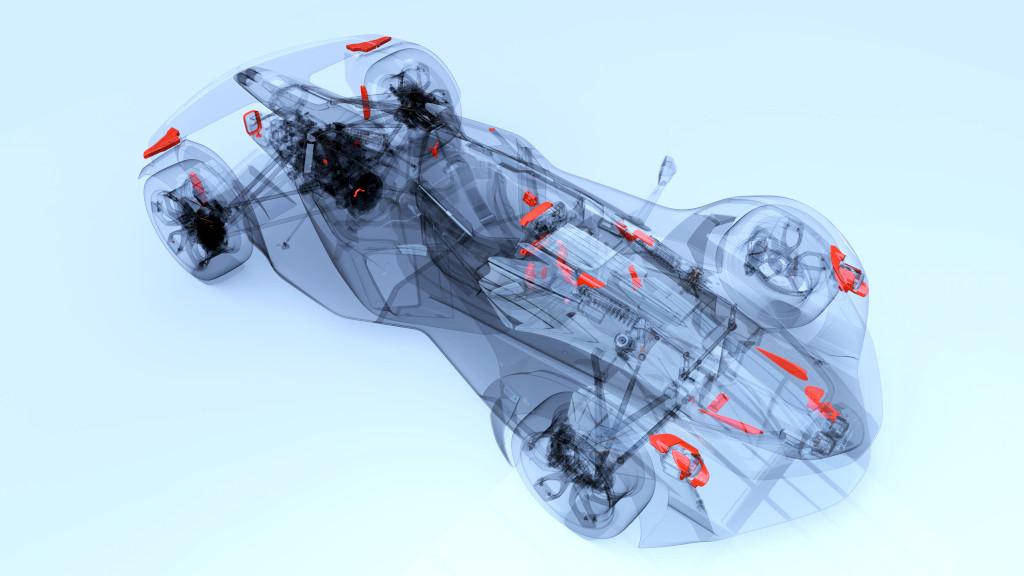The highly anticipated launch of the Bambu Lab H2D sparked excitement among tech enthusiasts and 3D printing industry insiders alike. The Bambu Lab H2D boasts advanced features that could set new standards. The buzz around the launch and their slogan ‘Rethink Personal Manufacturing’ indicates that the H2D may bring disruptive and competitively priced options to the market. Let’s have a look at it.
This Guide Covers
- Specifications and Features
- Availability and Pricing
- Bambu Material
- About Bambu Lab
- MakerWorld
- Reviews
- Conclusion
Price: From $1,899, read more about pricing.
Product Affiliate Links: 3DWithUs is supported by its audience. Purchases via some links may earn us a small commission at no extra cost to you. This helps us to continue bringing you high-quality content. Our guides and reviews remain unbiased and independent.
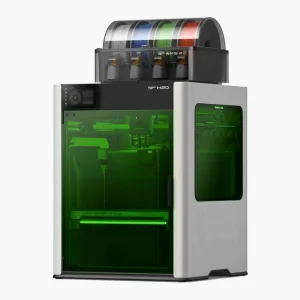
Bambu Lab H2D Specifications and Features
Detailed specifications spanning three PDF pages are available on the product’s main page. This versatile machine supports a variety of applications, including 3D printing, laser cutting and engraving, as well as digital cutting and pen drawing. Below are some key specifications.
Specifications
Build Volume (WDH):
Single Nozzle Printing: 325 x 320 x 325 mm³
Dual Nozzle Printing: 300 x 320 x 325 mm³
Total Volume for Two Nozzles: 350 x 320 x 325 mm³
Laser Safety Windows: Equipped on Laser Edition, upgradable through Laser Upgrade Kit
Air Assist Pump: Equipped on Laser Edition, upgradable through Laser Upgrade Kit
Overall Size: 492 x 514 x 626 mm³
Net Weight: 31 kg
Max Nozzle Temperature: 350 °C
Included Nozzle Diameter: 0.4 mm
Supported Nozzle Diameters: 0.2 mm, 0.4 mm, 0.6 mm, 0.8 mm
Supported Build Plate Type: Textured PEI plate, Smooth PEI Plate
Max Heatbed Temperature: 120 °C
Max Speed of Toolhead: 1000 mm/s
Max Acceleration of Toolhead: 20,000 mm/s²
Active Chamber Heating: Supported
Max Temperature: 65 °C
Pre-filter Grade: G3
HEPA Filter Grade: H12
Activated Carbon Filter Type: Granulated Coconut Shell
Cooling: Closed Loop Control (includes part cooling fan, auxiliary part cooling fan, chamber heat circulation fan, cooling fan for hotend, main control board fan, chamber exhaust fan)
Supported Filament PLA, PETG, TPU, PVA, BVOH, ABS, ASA, PC, PA, PET, Carbon/Glass Fiber Reinforced PLA, PETG, PA, PET, PC, ABS, ASA, PPA CF/GF, PPS CF/GF
Slicer & Software Compatibility: Bambu Studio, Bambu Suite, Bambu Handy; supports third-party slicers like Super Slicer, PrusaSlicer, and Cura
- Wi-Fi
Laser Wavelength:
Engraving Laser: 455 nm ± 5 nm Blue Light
Height Measuring Laser: 850 nm ± 5 nm Infrared Light
Laser Power: 10 W ± 1 W; 40 W ± 2 W
Laser Spot Dimension: 10W: 0.03 mm x 0.14 mm; 40W: 0.14 mm x 0.2 mm
Max Engraving Speed and Cutting Thickness:
10W: 400 mm/s; 5 mm (Basswood Plywood)
40W: 1000 mm/s; 15mm (Basswood Plywood)
Laser Safety Class: Class 4 for Laser Module; Overall Class 1
Features
– IDEX. Independent Dual Extruder. This system, although limited to two colors/materials, greatly enhances efficiency in terms of printing time and material waste. Additionally, printing a specific model with two different materials — hard plastic and soft plastic — can be the ideal setup for many projects.
– 10W/40W Optional Laser Modules. This addition is both new and bold. At 3DWithUs, we’ve tested many laser cutters and engravers, and can attest that 40W lasers are exceptionally powerful. However, the smoke produced by cutting some materials can be intense, leaving residue on glass and belts alike. It is crucial to adhere to the manufacturer’s guidelines for setting up proper ventilation and using specific materials only.
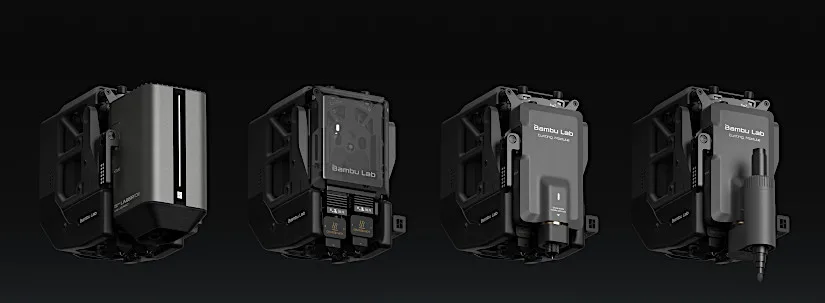
Image: Bambu Lab
– Build Volume. Since Bambu Lab X1C appeared on the market offering high-speed and multicolor 3D printing first, many users have requested larger volume machines capable of printing bigger objects such as masks and helmets, for example. The H2D build volume definitely answers these calls. The new H2D build volume is 350 x 320 x 325 mm³ in comparison to the 256 x 256 x 256 mm³ of the X1C.
Other bonuses such as a high-temperature nozzle and active chamber heating are not novel, but they are undoubtedly very welcome in order to print with engineering-grade materials.
Official video shows very well all H2D Laser Full Combo features. From IDEX (Independent Dual Extruder) to the new Filament Drying AMS box and Laser Engraving and Cutting module. Remarkable showcased designs that are available at MakerWorld, Bambu Labs’ file repository definitely help sell the product.
Availability and Pricing
$1,899 – Bambu Lab H2D
$2,199 – Bambu Lab H2D Combo
$2,799 – 10W H2D Laser Full Combo
$3,499 – 40W H2D Laser Full Combo

Please monitor prices and availability on the Official Website.
Is this pricing competitive? We are not entirely sure. Bambu Lab definitely enjoys their previous machines’ reputation and doesn’t need to fight for affordability in the price. Build volume-wise, the plain H2D pricing is very close to Creality K2 Plus, and then the 3D printer and laser module feature of the H2D can be compared to Snapmaker Artisan 3-in-1. In both cases, price-wise, products are on the same level.
Bambu Material
We were also pleased to find a wide range of materials on their website, indicating that their commitment to laser cutting, engraving, and precise cutting is a serious endeavor. This suggests that we can expect even more ‘Personal Manufacturing’ solutions in the future.
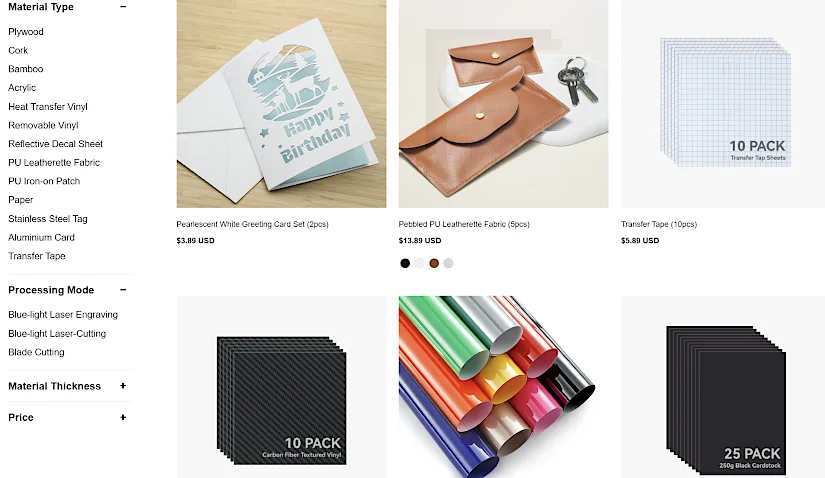
About Bambu Lab
Founded in 2020 and based in Shenzhen, China, Bambu Lab first made its mark on the tech scene with a highly successful Kickstarter campaign that launched their award-winning multicolor 3D printer, the X1. Their Automatic Multicolor System (AMS) was highly praised and remained dominant in the market for several years.
In recent years, you can find the presence of Bambu Lab, either products or representatives, at all tradeshows and RepRap festivals.
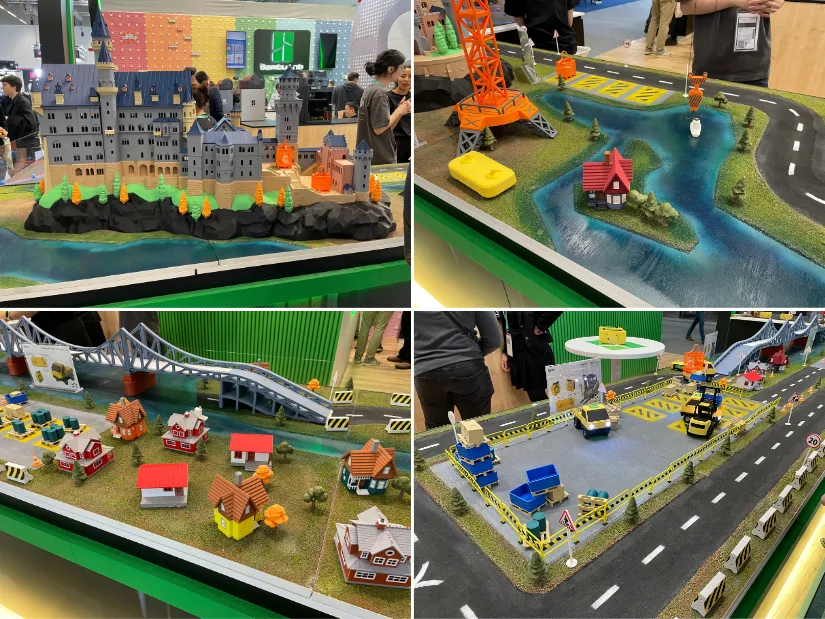
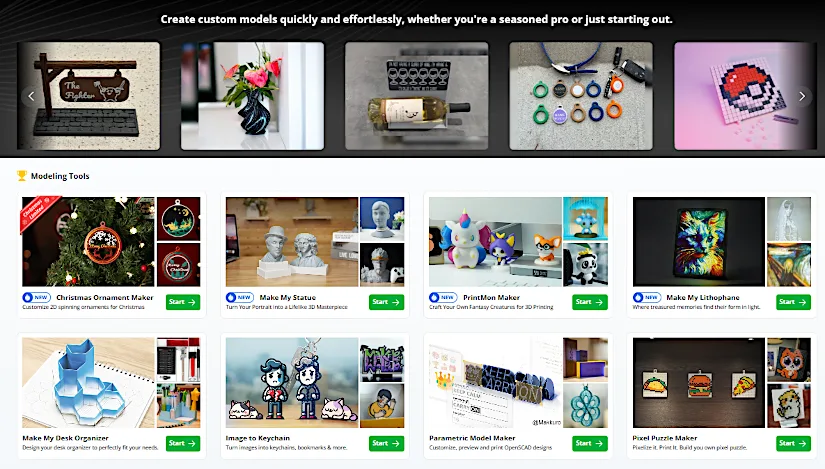
Screenshot: MakerWorld
Bambu Labs’s MakerWorld
It is important to mention the rapidly expanding Bambu Lab’s MakerWorld platform. This platform has seen exponential growth recently, with 10 million+ views per month according to SimilarWeb. MakerWorld is a 3D printing files repository that is optimized to serve Bambu Lab printers firsthand, offering 3D model print profiles without the need for using slicer software. Together with well-functioning machines, this has proved to be a quickly popularized ecosystem. In our guide about file repositories, we listed MakerWorld’s popular features.
The buzz around the H2D launch is also fueled by designers eager to capitalize on the momentum and create H2D-related 3D models. There is already a substantial collection available for printing. As experience has shown, many interesting custom builds and solutions for the H2D are expected to be featured on MakerWorld quite soon.
H2D Reviews
As expected, leading niche influencers and testers received units to evaluate the product before the launch. As a result, prominent figures such as 3D Printing Nerd, Adam Savage, CNCKitchen, Frankly Built, and others published their reviews simultaneously, adhering to embargo rules.
While there will be many H2D reviews in the wild, and we expect to publish written reviews on 3DWithUs as well, here are a few examples of their previous, cheaper models published on our website. Will Zoobkoff conducted serious testing on the Bambu Lab P1S and Bambu Lab A1. His color prints of the masks are especially astonishing.
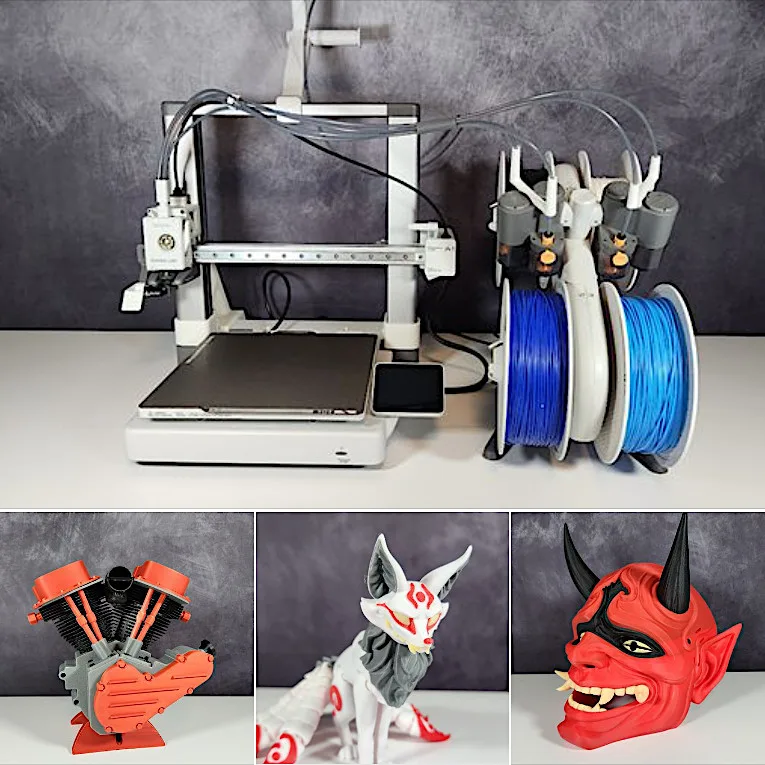
Featured Designs: BambuLab, TwistyPrints, Pipe Cox
©3DWithUs – Prints and Photo: Will Zoobkoff
The Bambu Lab A1 is a commendable 3D printer that can suit the needs of both hobbyists and professionals. The company’s commitment to safety, combined with the A1’s amazing features and outcomes, make it a significant asset in the ever-changing field of 3D printing technology.
Read more – unboxing, testing, and print examples:
Bambu Lab A1 Combo with AMS lite Review by Will Zoobkoff.

Featured Designs: Pipe Cox, TwistyPrints
©3DWithUs – Prints and Photo: Will Zoobkoff
The Bambu Lab P1S Combo stands out as one of the top printers and AMS systems on the market today. It distinguishes itself as a top-tier solution for printing enthusiasts, with optional multi-material and multi-color capabilities, lightning-fast print speeds, and a fully enclosed design for high-temperature printing. Despite the possibility of increased waste generated by the AMS – Automatic Material System and somewhat higher noise levels, the P1S remains one of the best printers available.
Read more – unboxing, testing and print examples:
Bambu Lab P1S Combo by Will Zoobkoff.
Conclusion
The product launch was successful from a marketing standpoint. Review units were distributed to prominent testers and reviewers in the niche, and the established reputation of Bambu Lab products contributed as well.
If a larger build volume is a welcome and highly anticipated feature, then the laser engraving and cutting capability caught many by surprise. Seeing how these two disciplines perform together in such an unusual setup will be interesting.


